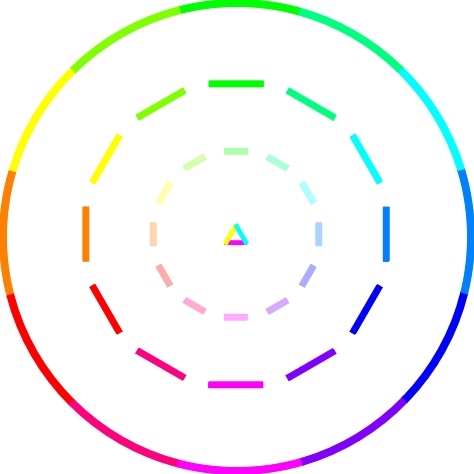Prismology Sir Isaac Newton is often credited with discovering the color spectrum by using a prism to break apart light. On this webpage, we use the very same technique to analyse the elements of the colors that we see. The following is a series of revealing images that are "prismized" which allows us to arrive at some enlightening conclusions. Before beginning this section, you should know that the two primary systems of color are called: Additive and Subtractive. The Additive system is used when projected light is involved. When colored lights overlap, various colors are seen by the eye. Subtractive color involves the absorption of light. In this case, the eye sees the reflection of light. For example, the feathers of a yellow canary will absorb blue-violet rays of the sun and reflect red and green light. This appears yellow to our eyes. In the images below, we are able to switch between color mixing systems by using offsetting backgrounds. (However, computer monitors always use additive color because of the projection of light.) Our goal is to determine the primary colors of each systems and see how they react under a prism. The interesting thing is that by placing a 'selected' color on a white background, you can see the 'subtractive' colors which make up the color. By placing the color on a black background, you can see the 'additive' colors. As you shall see, the prism can also be used to quantitatively identify the 'best' primaries. |
Other Articles: Return to Articles Menu |








